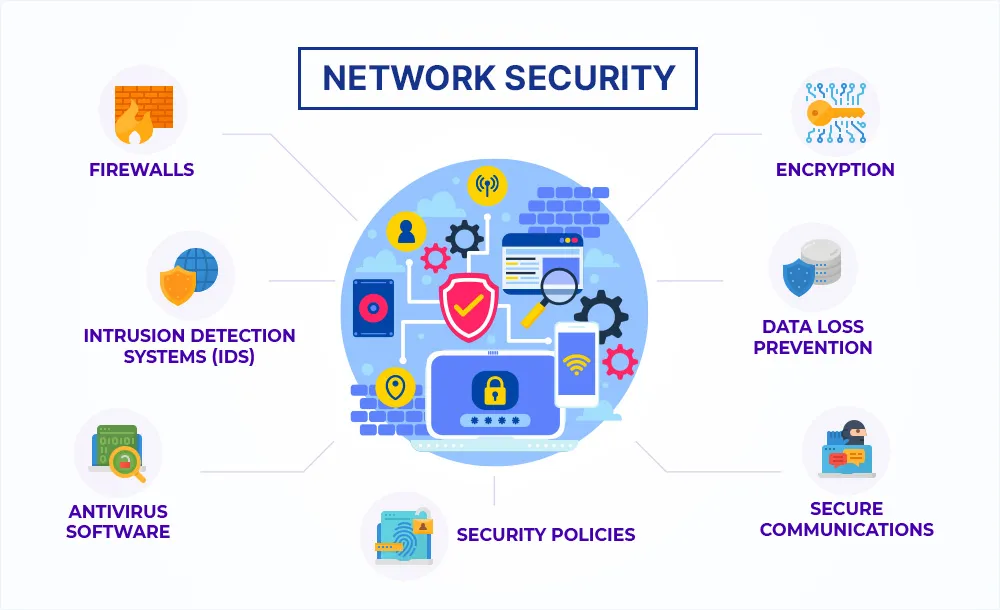Think of your business’s network like a vault holding your most valuable secrets. Now, imagine that the vault has multiple hidden doors, each being targeted by skilled thieves every minute of every day. This is the reality of network security today.
It’s a constant battle to keep these doors locked and the intruders out. Without solid network security, these intruders will break in and wreak havoc.
| As Jason Harlam, Business Development Manager at Technology Advisory Group, says, “The stakes have never been higher. Understanding and implementing robust network security protections is not just a precaution; it’s a necessity.” |
A staggering 68% of business leaders report that their cybersecurity risks are increasing.
This growing menace underscores the urgent need for robust network security solutions to shield businesses from the devastating impact of cyber intrusions and data theft.
What is Network Security?
Network security is the practice of safeguarding a computer network and its data from unauthorized access, attacks, or damage. It involves a variety of policies, technologies, and controls designed to protect the integrity, confidentiality, and availability of network and data.
Why is it Important?
In a world where sensitive data and personal information are increasingly digitized, the consequences of security breaches and cyber threats like DDoS attacks can be devastating. For a detailed look at specific incidents, check out CloudSecureTech’s top 10 DDoS attacks. From loss of customer trust to financial ruin, the impact of weak network security can cripple businesses and harm individuals.
Effective network security measures are crucial for protecting against malicious software, data loss, and compliance with regulatory requirements.
Stop Worrying About Network VulnerabilitiesLet TAG shield your business from cyber vulnerabilities with our proactive approach. |
Types of Network Security Protections

Source: Integrated Research
1. Firewalls
Firewalls act as a barrier between trusted and untrusted networks. They filter incoming and outgoing network traffic based on an organization’s previously established security policies. A firewall can be hardware, software, or both. This control of network traffic is crucial for preventing unauthorized access and can also manage and log all attempts to enter the network.
2. Antivirus and Antimalware Software
The AV-TEST Institute registers over 450,000 new malicious programs (malware) and potentially unwanted applications (PUAs) every day.
These software systems are essential for detecting, preventing, and removing malicious software, collectively known as malware. Malware can include viruses, worms, trojan horses, ransomware, and spyware. Antivirus and antimalware software scan computer files and memory for patterns that may indicate the presence of malicious software.
3. Intrusion Prevention Systems (IPS)
These systems extend the capabilities of the intrusion detection system (IDS) by detecting and preventing attacks.
IPS continuously monitors network and system activities for malicious or unwanted behavior and can react in real time to block or prevent those activities. Advanced IPS systems can even predict potential threats and mitigate them before they occur.
4. Network Segmentation
This security measure involves splitting a network into smaller networks, making it easier to manage and secure. By segmenting networks, administrators can control the flow of traffic between segments, apply more stringent security controls to sensitive data segments, and isolate any issues that arise, limiting the potential damage from network intrusions.
5. Virtual Private Network (VPN)
A VPN creates a secure connection over a less secure network, like the Internet. It encrypts data transmitted over the network, providing privacy and security. This is particularly useful for ensuring the security of remote connections, safeguarding mobile devices, and maintaining data confidentiality.
6. Email Security
Email security solutions are designed to protect an organization’s email from cyber threats and unauthorized access. They include methods to secure sensitive information in email communication and accounts. They also involve technologies for pre-delivery inspection of emails, secure email gateways, and post-delivery protection.
7. Web Security
This involves securing an organization’s web gateway to protect against web-based threats. It includes securing direct web access, managing user internet access, and protecting the organization from malware and other forms of web-based attacks. This security is crucial for ensuring safe web browsing and preventing web-based attacks.
8. Wireless Security
Wireless networks are more susceptible to unauthorized access due to their broadcast nature. Wireless security involves protecting Wi-Fi networks from unauthorized access and hacking. Security measures include the use of strong passwords, encryption, and secure wireless protocols.
9. Data Loss Prevention (DLP)
DLP technologies and policies are used to prevent unauthorized access and sharing of sensitive data. This can include tools that monitor and control endpoint activities, filter data streams on corporate networks, and monitor data in the cloud to protect data in transit, at rest, or in use.
10. Behavior Analytics
This refers to tools that use data analytics to identify patterns of user behavior on a network. By establishing what normal behavior looks like, these tools can detect anomalies that may indicate a security breach, such as unusual access patterns or significant changes in data usage.
11. Encryption
Encryption is the process of encoding data so that only authorized parties can access it. By converting the original representation of the information, known as plaintext, into an alternative form known as ciphertext, encryption prevents unauthorized users from accessing the data in a meaningful way.
| More resources you might like: |
12. Application Security
Application security encompasses measures taken to improve the security of an application by finding, fixing, and preventing security vulnerabilities. This includes security considerations during application development and design, but also systems and approaches to protect apps after they are deployed.
Network Security Best Practices for 2024
| Network Security Type | Best Practices |
| Firewalls | Regularly update firewall rules and configurations; Monitor and log all traffic |
| Antivirus/Antimalware | Keep software updated; Perform regular scans; Educate users about safe practices |
| Intrusion Prevention Systems (IPS) | Continuously update IPS signatures; Monitor and analyze IPS alerts |
| Network Segmentation | Define clear segment roles; Control inter-segment access; Regularly review segmentation strategy |
| Virtual Private Network (VPN) | Use strong encryption; Ensure endpoint security; Implement secure authentication methods |
| Email Security | Implement spam filters; Use email encryption; Train users in identifying phishing attempts |
| Web Security | Deploy web application firewalls; Conduct regular security assessments; Monitor and control web traffic |
| Wireless Security | Use strong WPA3 encryption; Enable network cloaking; Regularly update hardware and firmware |
| Data Loss Prevention (DLP) | Monitor data movement; Control data access based on roles; Encrypt sensitive data |
| Behavior Analytics | Continuously monitor user behavior; Use AI to detect anomalies; Integrate with other security systems |
| Encryption | Encrypt data at rest and in transit; Use strong encryption standards; Manage encryption keys securely |
| Application Security | Conduct regular security audits; Implement secure coding practices; Use application firewalls |

Get Protection Against Dangerous Network Threats With TAG
It’s clear that the complexities and risks of network security are significant challenges for any organization.
With Technology Advisory Group’s 25 years of expertise in network support and security, we are uniquely equipped to address these challenges head-on.
| Discover Trusted Network Support Services Near You
|
Our extensive experience in managing over 1,512 endpoints for more than 75 clients demonstrates our capability to provide robust and reliable network security solutions.
Don’t let network security concerns be your organization’s downfall.
Reach out to us for a free consultation today, and take the first step towards a more secure and resilient network infrastructure.
Schedule Your Cloud Services Consultation
Ready to make a move to the cloud? TAG is ready to help with any or all cloud services from a private cloud, public cloud, or Microsoft 365 services.


